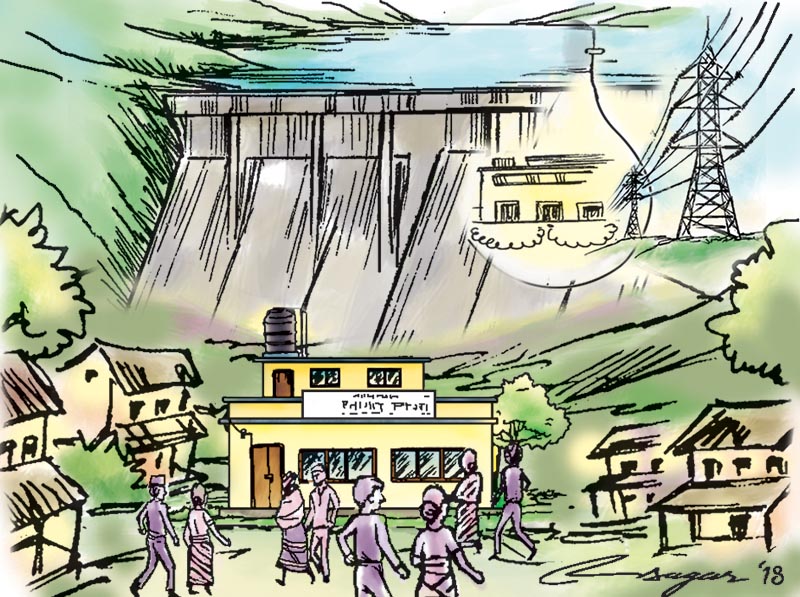Construction of 220 kV transmission line begins
Kathmandu, November 21
The construction of the 220 kV Chilime-Trishuli transmission project began today.
The 27-km double-circuit high voltage transmission line will help hydropower and solar projects located in Nuwakot and Rasuwa districts to evacuate power. Some of the projects that will benefit from the transmission project are: 60MW Upper Trishuli 3A, 37MW Trishuli 3B, 216MW Trishuli-1, 111MW Rashuwagadhi, 14.8MW Upper Sanjhen and 42.5MW Sanjhen.
The 65.25-million-euro project includes construction of 220/132 kV Trishuli 3B substation, 220/132 kV-Chilime substation and Chilime-Trishuli 220 kV double circuit transmission line. The project is joint undertaking of the European Union, German Development Cooperation (KfW), European Investment Bank and the Nepal government.
“The construction of the state-of-the-art 220 kV double circuit line is an excellent example of a strong partnership and collective efforts of the Nepal government, the KfW, the EU and the European Investment Bank,” Minister for Energy, Water Resources and Irrigation Barsha Man Pun said during the groundbreaking event.
The project, according to Minister Pun, will come into operation within this fiscal year.
“Once complete, the new Chilime-Trishuli transmission project will allow thousands of people living in the Trishuli River Basin and beyond to benefit from clean hydropower energy and a more reliable power supply,” a statement issued today quoted Minister Pun as saying. “This crucial energy project is crucial for Nepal’s sustainable development.”
The Chilime-Trishuli transmission line project highlights how technical and financial cooperation between state-owned Nepal Electricity Authority (NEA) and European partners benefits the country and helps to harness low-carbon power sources, said NEA Managing Director Kul Man Ghishing. “The investment in clean energy will support sustainable development across Nepal and significantly increase use of renewable energy sources.” The new transmission link will enable hydropower projects that are planning to generate 600 megawatts of clean energy to evacuate power. These projects are being built by the government and independent power producers.
“Clean energy should be a top priority in Nepal, which is vying for accelerated development,” Ambassador of the EU Delegation to Nepal Veronica Cody said.






